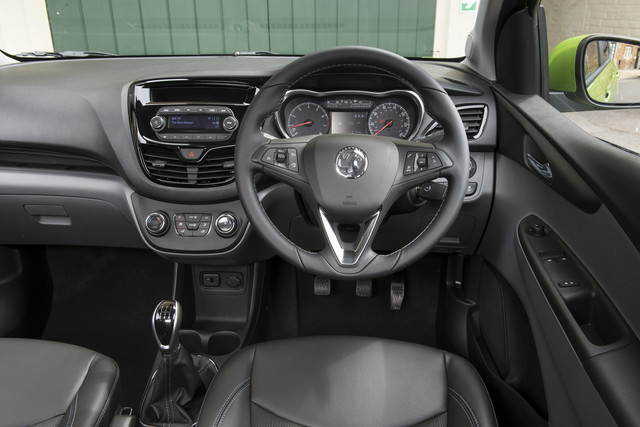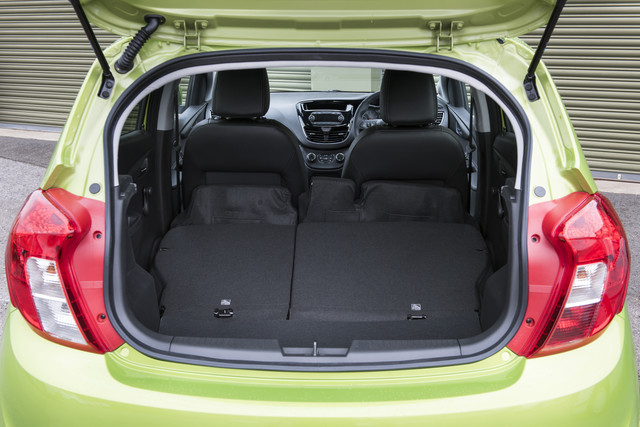Don’t worry, you are in the right place, you haven’t travelled back in time, this is the Vauxhall Viva – it’s just this car has wing mirrors and your granddad won’t have owned one – yet, anyway. But that is not all that is different with Vauxhall’s new Viva city car.
According to Vauxhall, revitalising the Viva namesake is ultimately nostalgic for the older generations but also sounds cool to the younger ones, too. This is in-line with its targeted demographic of 45-50 years olds, who will most likely need it for simple A to B trips, as well as under 25s who are looking for an affordable first car. And with the tagline “Just like the old one, but completely different”, Vauxhall promises that the new Viva instils the same core value for money standards.
Its design sits neatly alongside its slightly larger ADAM and Corsa siblings, although its flanks offer some unique zig-zag-styled creases – Vauxhall’s attempt to reduce a conservative sheet metal look. This works quite nicely.
Before discussing its drive, I just want to mention the interior of the entry-level £7,995 SE model – which is expected to be the best-seller. For this price you get cruise control, lane departure warning, steering wheel-mounted controls and a City Mode setting – which makes the steering lighter and sharper to assist with tricky manoeuvres. Air-con is an extra £500.
The layout on the dash is extremely stripped back and is covered in black gloss – offering a similar feel to Peugeot and its decluttering ethos. As an entry-level model, quality and overall feel is very impressive, closer to matching the Hyundai i10’s interior than any of the Volkswagen groups models (the VW Up!, SEAT Mii and Skoda Citigo). Scratchy plastics are still easily found though.

One thing you may find a little frustrating is the omission of reach in the steering column. I found it easy to get comfortable, but I know some struggle when this is the case.
Under the bonnet sits the same naturally-aspirated 74bhp 1.0-litre, three-cylinder ECOTEC petrol unit debuted in the ADAM and Corsa modes. This is the sole engine option.
Vauxhall is adamant that the Viva does not need a turbocharger, stating that the added power and cost is unnecessary – and I completely agree. It does take some working to get the most out of it, but when combined with a smooth five-speed manual gearbox there is enough zest to keep you going in the city and, on twisty roads, we found it rather entertaining.
Speaking of twisty roads, the Viva’s ride and handling feels surprisingly grown-up when pushed around bends, with excellent grip and minimal body roll. Its planted composure in the corners feels more supermini than city car. This composure is met with agreeable weighting and accuracy at the steering wheel, meaning you are unlikely to worry where the wheels are pointing. The suspension sits nicely on the fence between suppleness and firmness as well, meaning there is comfort but also enough tautness to have a bit of fun.
When you start to reach 60 and 70mph you will get wind and road noise interrupting dialogue slightly, so the Hyundai i10 does reign supreme when it comes to insulation.
CO2 for the entry-level 1.0-litre 74bhp stands at 104g/km, with a claimed average mpg figure of 62.8. Go for the ecoFLEX variant and CO2 emissions fall to 99g/km – which means free Vehicle Excise Duty.

In terms of its practicality, up front you shouldn’t have a problem, with plenty of head and elbow room. Knee room in the back is par for the course but head room is particularly impressive as Vauxhall seem to have strategically chiselled out additional space for rear passengers.
Boot capacity falls behind a little at 206 litres – the VW Up! and i10 comfortably offer 250 litres plus. There is still 1,013 litres in total load capacity though.
The Viva feels more grown-up than you may expect. It isn’t game changing but it offers affordable, stylish, competent motoring for under £8,000.



